How to calculate power, current and voltage: principles and examples of calculation for domestic conditions
Owners of apartments, private houses and other electrified objects often face the question of determining the values of the main electrical quantities, since it is not very simple to calculate power from the allowable current strength and known voltage or to solve the inverse problem.
Direct application of the famous Ohm's law without taking into account the features of household networks and devices can lead to an incorrect result.
In this material, we will understand what power is and talk about how to calculate this indicator.
The content of the article:
Basic concepts of quantities
Electrical calculations are based on well-known relationships between current strength (I, Ampere), voltage value (U, Volt), power value (P, Watt) and resistance (R, Ohm). Practical calculations usually require knowledge of the values of the first three.
We will warn you that the numerical expressions of the listed values are not enough - we need additional characteristics that reveal the power consumption mode.
Electric current
Calculation of a sufficient cross section of the cores and the rating of the circuit breaker for a particular branch of the power grid is carried out according to the value of the maximum possible current for this section. This is necessary to prevent a fire situation in the wiring, which often leads to a fire.
Workers machine parameters and RCDs are selected according to regulatory requirements. To determine the permissible cross-section of conductors, depending on the maximum possible current strength, it is necessary to use the table provided by the manufacturer of the products, because the cables are most often produced according to TU, and not according to GOST.
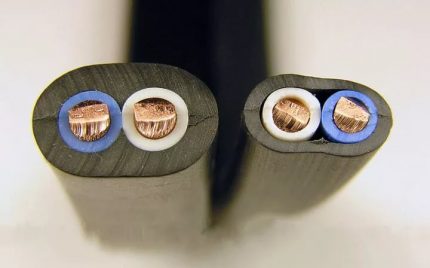
Since it is possible to calculate the electric current strength from the power consumed by the devices and the network voltage, it is necessary to correctly determine the values of these two indicators.
Voltage in household networks
Many apartment owners believe that the standard phase voltage for household needs is approximately 220 V.In most cases this is true. Although by GOST 29322-2014 from 01.10.2015 within the Russian Federation, a transition to a 230 V system compatible with the EEC countries was supposed
A deviation of 5% from the standard is acceptable for any period, and 10% for a period not exceeding 1 hour. Thus, according to the old rules, the voltage value can fluctuate in the range from 198 to 242 V, and according to the current GOST - from 207 to 253 V.
There are also cases where the voltage in the network for a long time is significantly lower than the normative. Such a situation arises when the total power of electrical appliances connected to the branch is much higher than planned and when the majority of them are turned on, “network drawdown” occurs.
This problem arises in the area of responsibility of organizations responsible for the supply of electricity, and it is associated with overloading distribution transformers, deterioration of substations or with insufficient cross-section of wires.
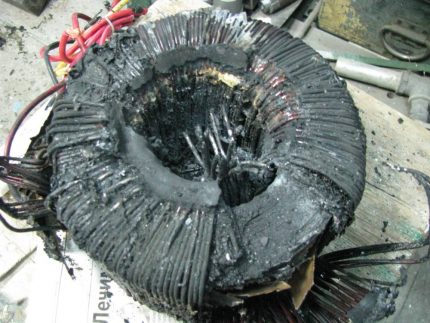
To find out the meaning real voltage it is necessary to periodically measure using a voltmeter. If the indicators are very “walking”, then application is necessary stabilizer or more expensive converter with the function of energy storage.
Nuances in the concept of power of electrical appliances
All devices consuming electricity have such a parameter as power. The higher this indicator, the more energy the device takes from the circuit.
There are three types of power:
- Active (P). It characterizes the rate of conversion of electrical energy into another form, for example, electromagnetic or thermal. It must be taken into account when calculating the irreversible energy costs, and therefore the cost of the device. The unit of measure is W.
- Reactive (Q). It characterizes the energy that comes from the source (transformer) to the consumer reactive elements (capacitors, motor windings), but then almost instantly returns to the source. The unit of measure is W or var (decoding - volt-ampere reactive).
- Full (S). It characterizes the load that the consumer imposes on the elements of the circuit. It is used in calculating the cross-sectional area of the cable and choosing the rating of the machines, that is, the current strength is calculated at the full power of all electrical appliances connected to the circuit. The unit of measure is W or V * A (V * A is a volt ampere).
All these parameters can be recalculated through the phase angle that occurs between the voltage vector and current (f):
P = S * cos (f);
Q = S * sin (f);
S2 = P2 + Q2.
To household appliances, in which the total power can significantly exceed the active, include refrigerators, washing machines, fluorescent and some energy-saving lamps, as well as power electronics units.
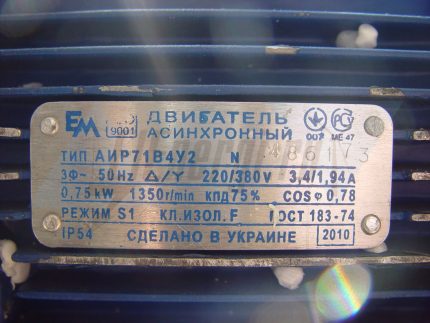
There is also such a thing as peak or starting power. The fact is that to accelerate the engines requires much more effort than to maintain their rotation. Therefore, when you turn on devices such as a refrigerator or a washing machine, a short-term surge in load occurs on a section of the circuit.
Starting currents can be several times higher than the working ones. When calculating the necessary cable sections and the selection of the rating of the machine should take this into account.
To do this, you need to determine the device with the greatest difference in starting and operating power and add it to the total value. The starting currents of other devices can be ignored, since the probability of simultaneous operation on the inclusion of engines from different consumers is almost zero.
Linear and phase relationships
Nowadays, the practice of connecting household objects to three-phase power grids has spread.
This is justified for the following reasons:
- Significant power consumption. In this case, summing up a single-phase high-power network will be very irrational due to the large cable cross-section and the high material consumption of the transformer.
- The presence of devices operating from three phases. The implementation of the circuit for connecting such a device to a single-phase circuit is not very simple and fraught with interference that occurs, for example, when starting an induction motor.
There are two ways to connect three-phase devices - “star” and “triangle”.
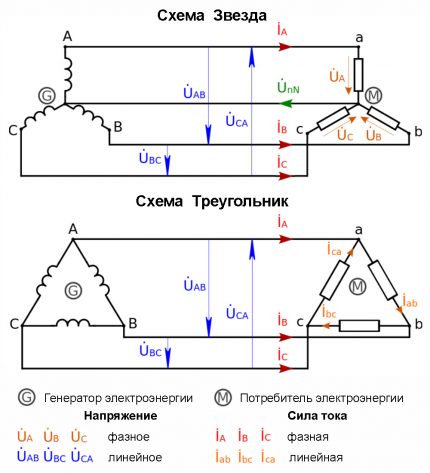
In star-type circuits, the linear and phase currents are identical, and the linear voltage is 1.73 times greater than the phase voltage:
Il = If;
Ul = 1.73 * Uf.
This formula explains the well-known voltage ratio for household and low-voltage industrial networks with a frequency of 50 Hz: 220/380 V (according to the new GOST: 230/400 V).
When connecting a triangle type, on the contrary, the voltage coincides, and the linear currents are more than phase:
Il = 1.73 * If;
Ul = Uf.
These formulas can only be applied with a symmetrical phase load. If the current consumption across the cables is different (unbalanced receiver), then the calculations are carried out using the rules of vector algebra, and the resulting equalizing current is compensated by the neutral wire. However, for networks with connected appliances, such cases are rare.
The relationship of the main quantities
The most common problem faced by ordinary consumers is to calculate the real current strength. So how to correctly calculate the amperage according to known values of voltage and power? It is necessary to solve it when substantiating the values of the cross section of the cores and the rating of the machine, having technical information about the devices that will be powered in this circuit.
After calculating the current strength, the cable with the smallest permissible cross section is often selected. However, this is not always correct, since such a solution leads to significant limitations when it is necessary to add new electrical appliances to the network.
Sometimes it is necessary to carry out inverse calculations and determine what total power can be connected to devices at a known voltage and maximum allowable current strength, which is limited by an existing wiring.
You can solve these two problems for a single-phase circuit using a simple formula:
I = S / U;
S = U * I,
Where S - total apparent power of all electric consumers.
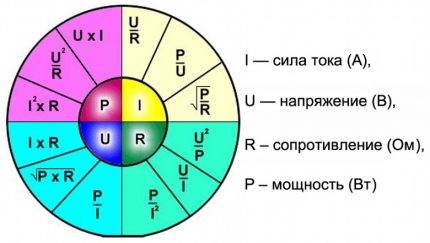
To solve the problem of calculating the current strength from known or calculated values of power and voltage in a three-phase circuit, you need to know the total load imposed on each phase.
And the required cross-section of cable conductors, and the minimum allowable rating of the machine are selected along the busiest line, considering that:
S = 3 * max {S1, S2, S3}.
I = S / (U * 1.73).
The permissible power for each phase can be calculated by the following formula:
S1,2,3 I * U / 1.73,
Where I - The maximum allowable current for existing wiring.
Conclusions and useful video on the topic
Calculation of current strength by power to select the cable section:
Determining the power consumption of groups of electrical appliances as an example of a private house:
The calculation of the current strength to determine the wiring parameters or determine the allowable power in an existing circuit can be done independently. For the correct solution of the problem, it is necessary to take into account the nuances that arise in practice, and not just use well-known formulas that work under “ideal” conditions.
If you have questions about the topic of the article or you can supplement this material with interesting information, please leave your comments in the block below.

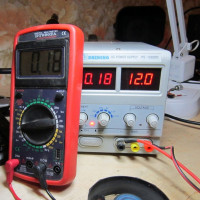 Converting Amperes to Watts: rules and practical examples of the conversion of voltage and current units
Converting Amperes to Watts: rules and practical examples of the conversion of voltage and current units 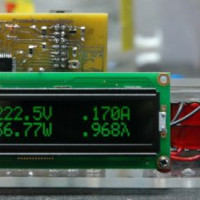 How to convert amperes to kilowatts: principles of translation and practical examples with explanations
How to convert amperes to kilowatts: principles of translation and practical examples with explanations  Convert kilowatts to horsepower: how many drugs in one kW + principles and calculation methods
Convert kilowatts to horsepower: how many drugs in one kW + principles and calculation methods 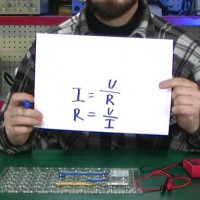 Ohm's law for the complete chain and for the section of the chain: writing formulas, description and explanation
Ohm's law for the complete chain and for the section of the chain: writing formulas, description and explanation  Uninterrupted for the computer: rating of the best UPS
Uninterrupted for the computer: rating of the best UPS 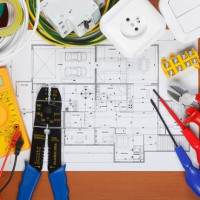 Wiring diagrams in a private house: rules and design errors + nuances of electrical wiring
Wiring diagrams in a private house: rules and design errors + nuances of electrical wiring  How much does it cost to connect gas to a private house: the price of organizing gas supply
How much does it cost to connect gas to a private house: the price of organizing gas supply  The best washing machines with dryer: model rating and customer tips
The best washing machines with dryer: model rating and customer tips  What is the color temperature of light and the nuances of choosing the temperature of the lamps to suit your needs
What is the color temperature of light and the nuances of choosing the temperature of the lamps to suit your needs  Replacement of a geyser in an apartment: replacement paperwork + basic norms and requirements
Replacement of a geyser in an apartment: replacement paperwork + basic norms and requirements
Three-phase circuits are usually used in production, since they require large capacities. In houses and apartments, one phase is enough. You can make calculations, but you can just remember: for illumination, a copper wire with a cross section of 1.5 square mm is enough, and for outlets it is better to take a cross section of 2.5. This with a large margin is enough for household appliances. But large water heaters are powered by a separate cable with a cross section of 4 kV., Connected to a separate line with its own automatic machine.
I didn’t understand, if everything is so simple and standard for each apartment, why then is this information generally given above? “You can do the calculations, but you can just remember.” And how does it work? Why then do them if we already know the result. A very controversial statement, I would be in your place to slow down with such statements and comments, otherwise you would create problems for someone.
Good day, Sergey.
You are right - not so simple. Vladimir’s comment is based on information circulating in the network - they often “forget” about the “Electrical Installation Rules” and talk about sections of apartment wiring as follows: “wires are usually used ...” and then they talk about 1.5, 2.5 squares that Vladimir mentioned.
The PUE, I emphasize, requires calculations, warning: if it turns out less than the minimum section shown in the table, a tabular section should be used. A screenshot of this requirement was attached to his comment.